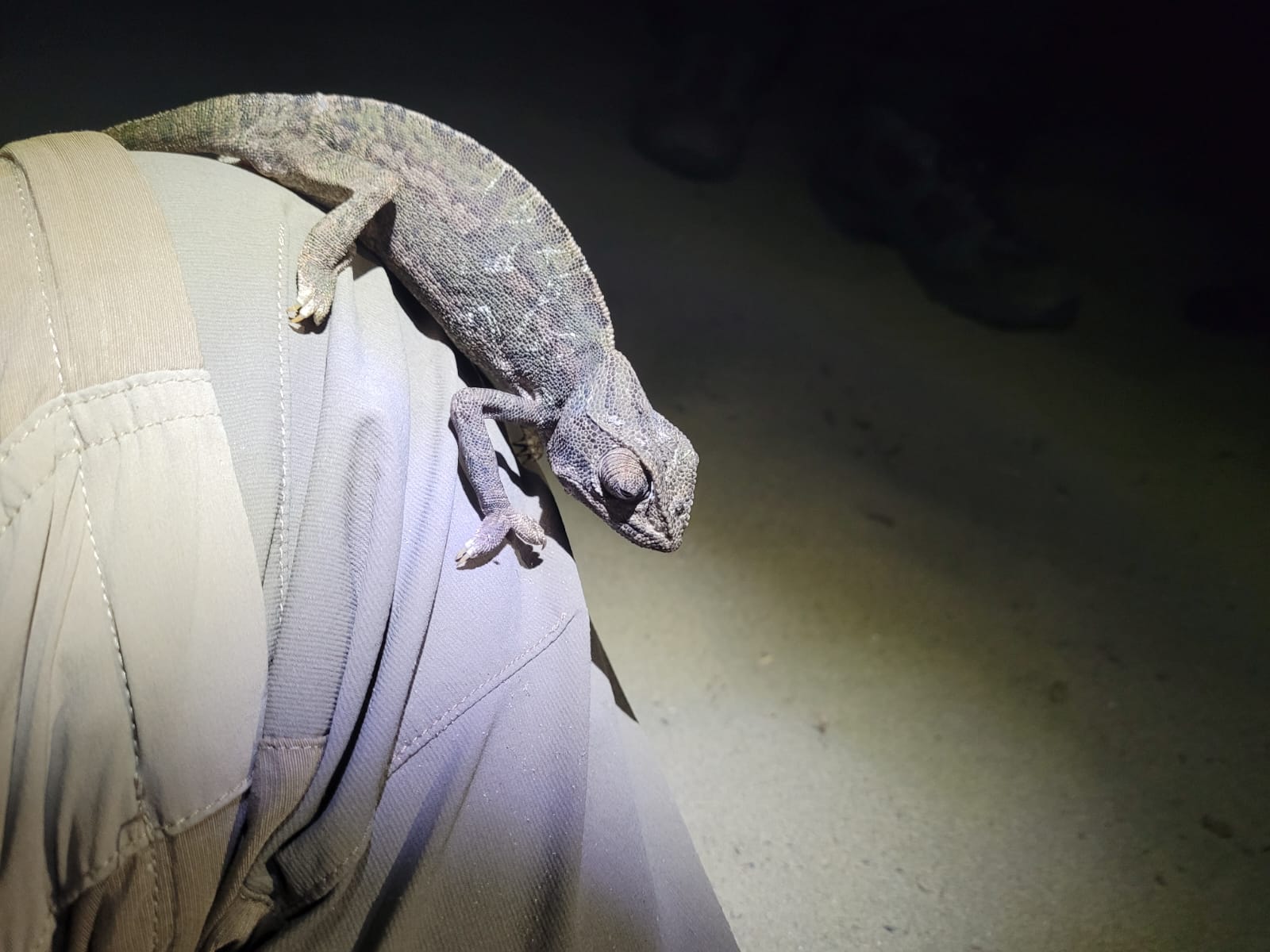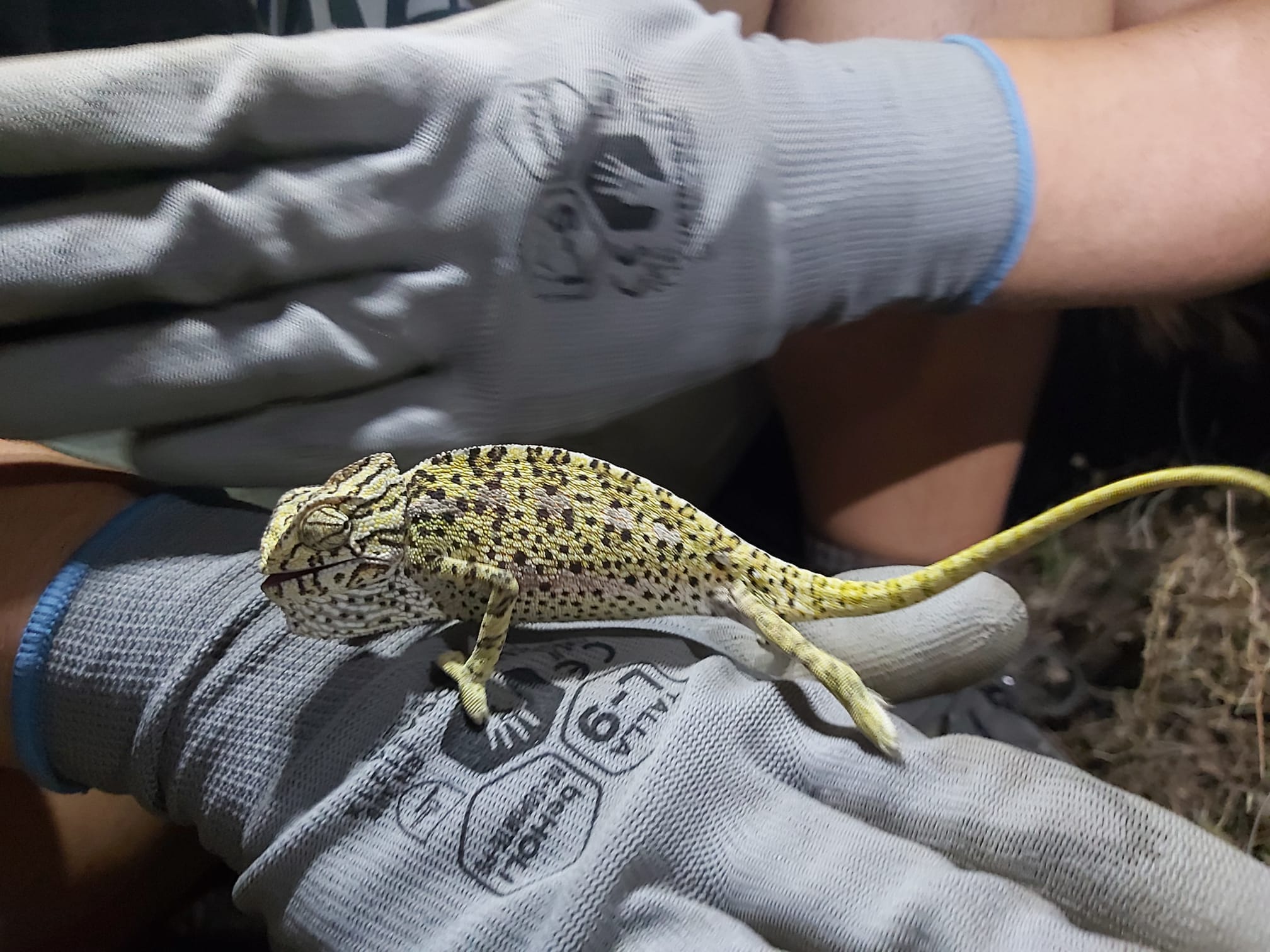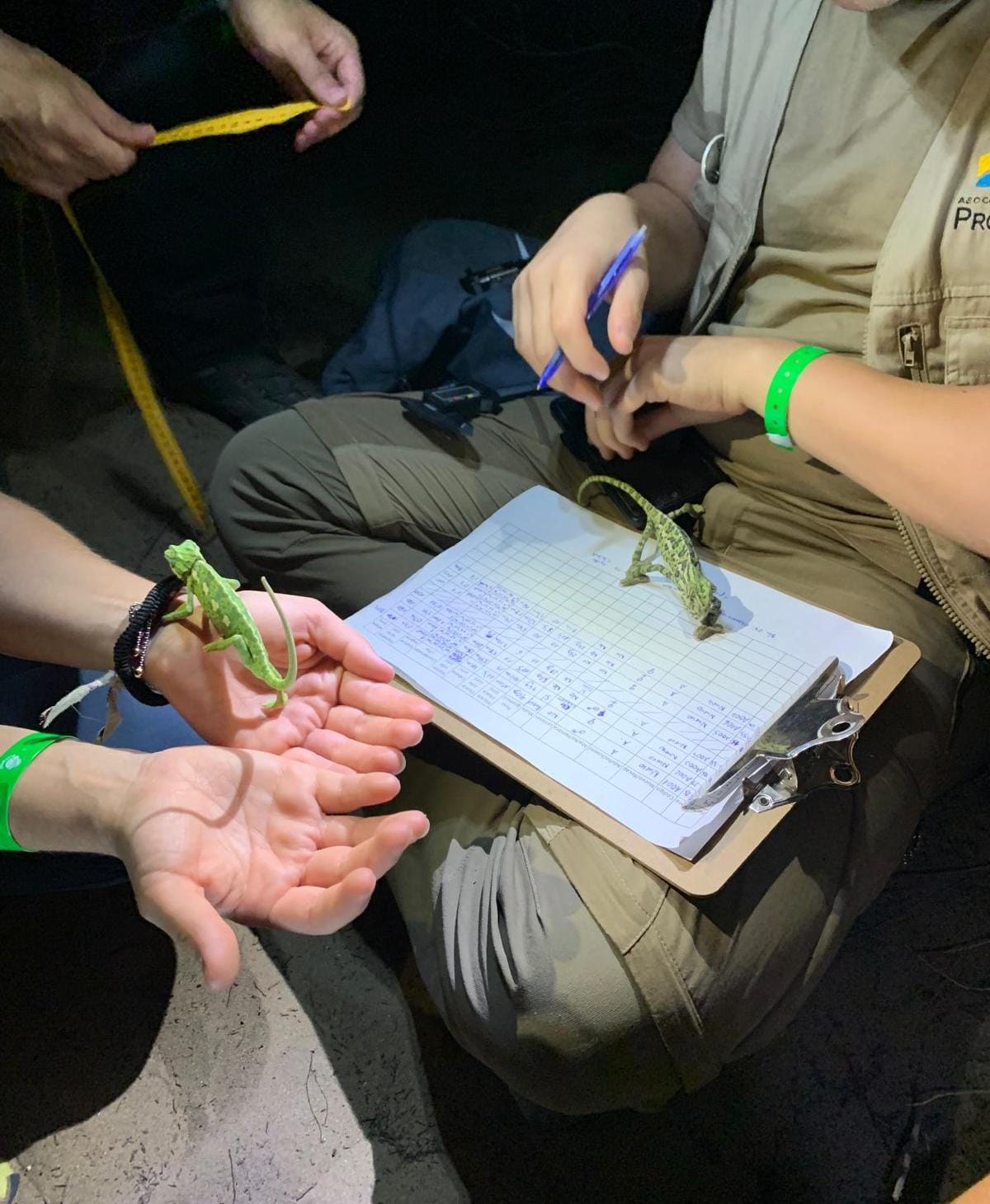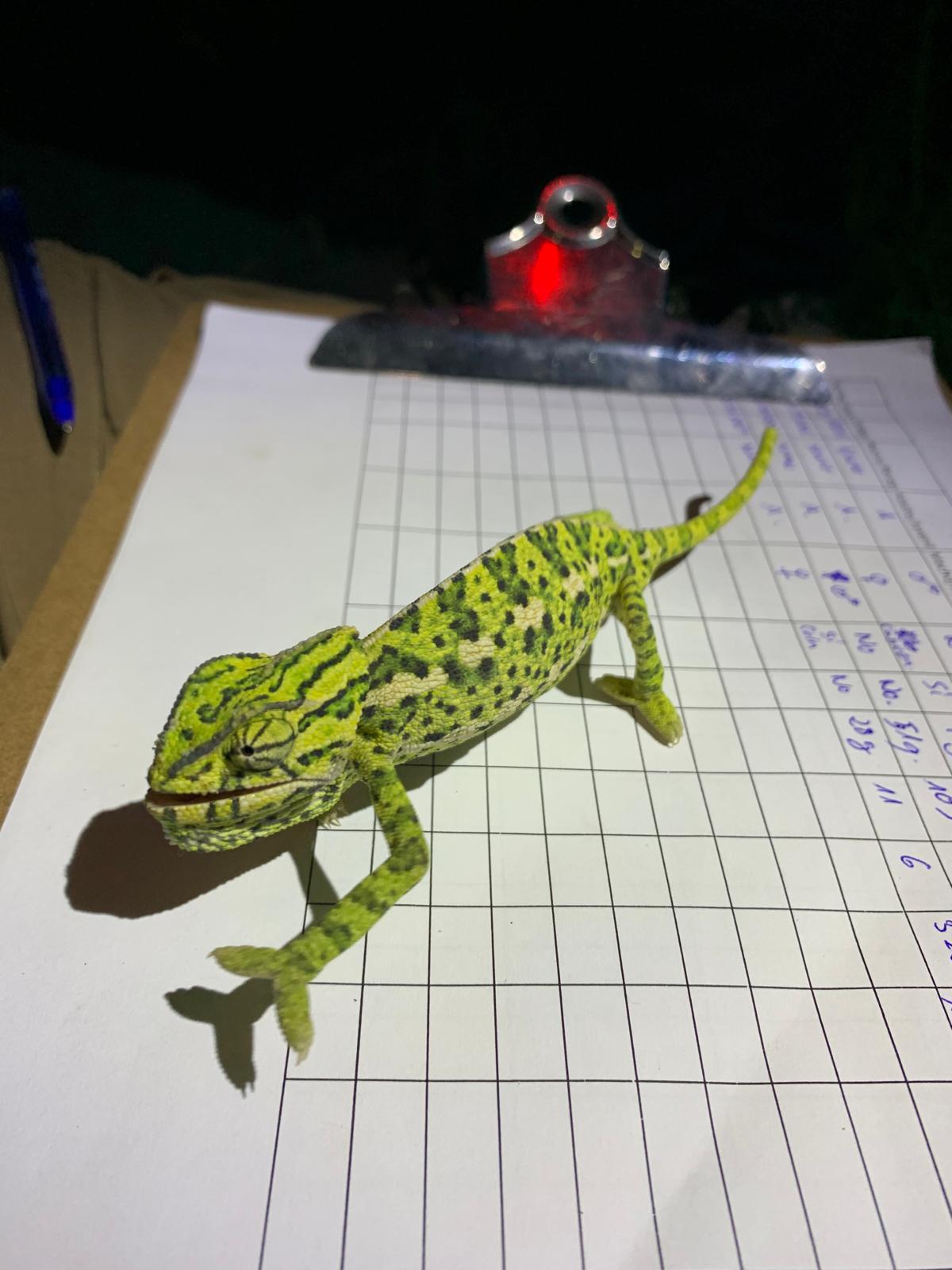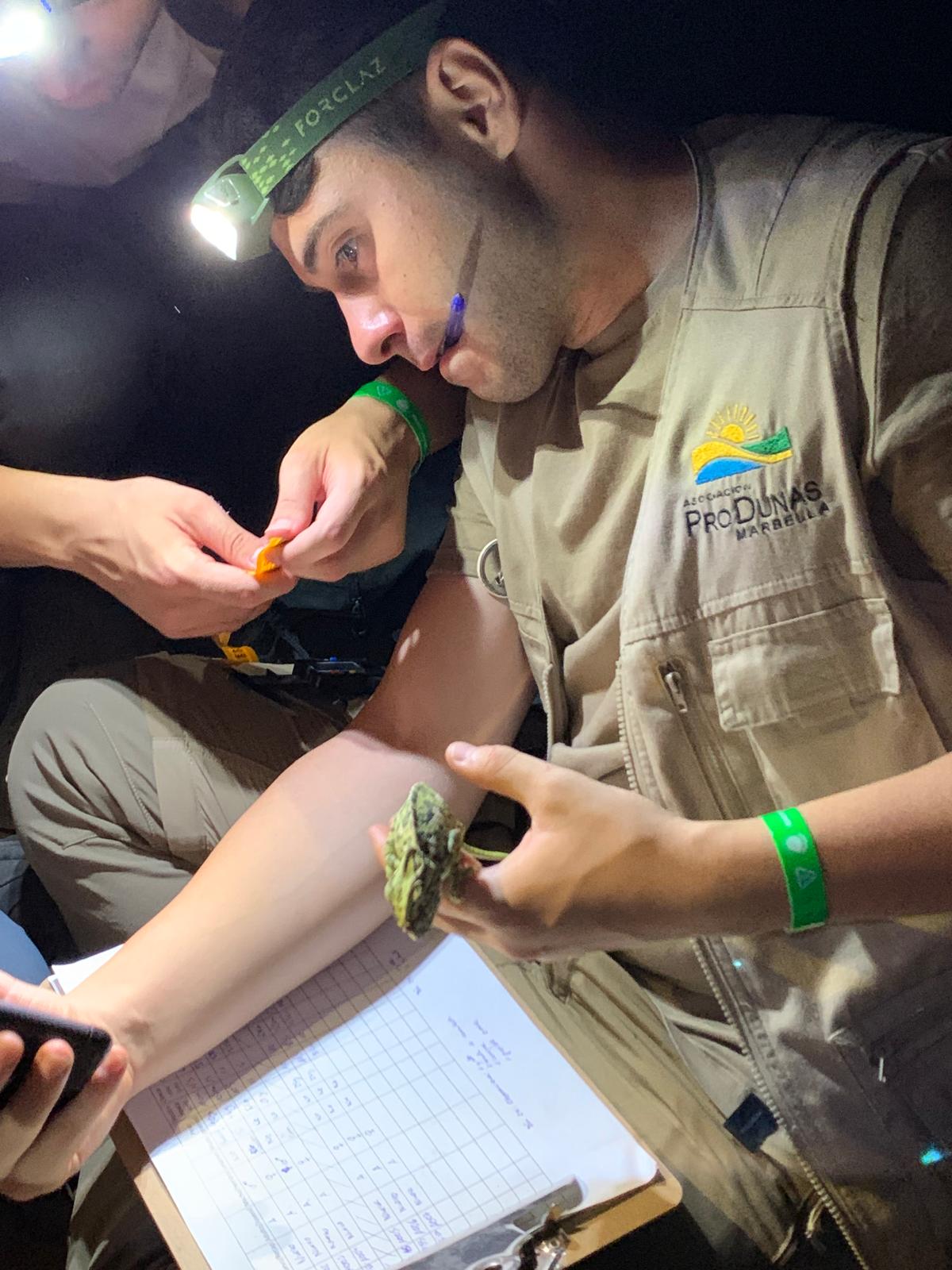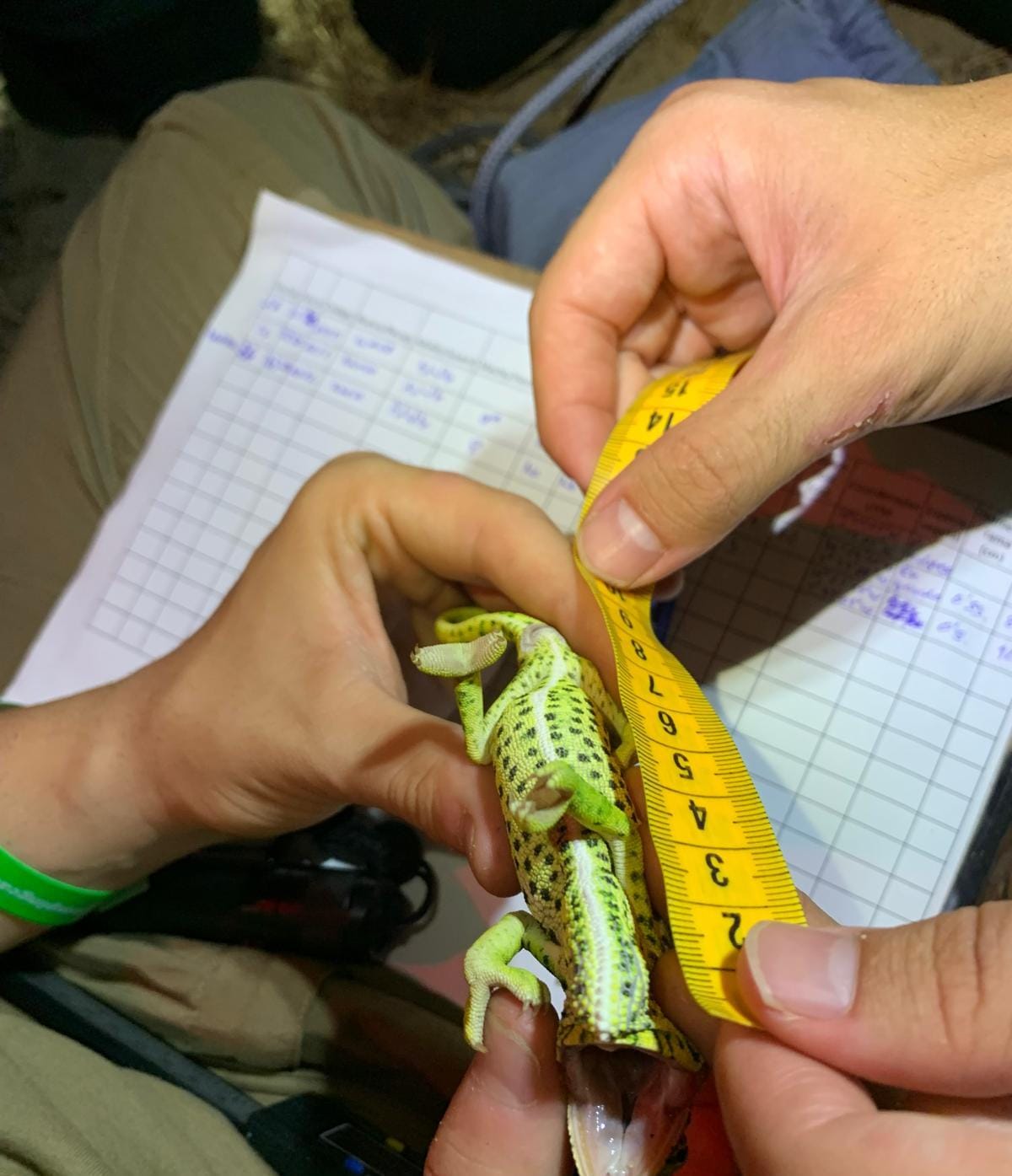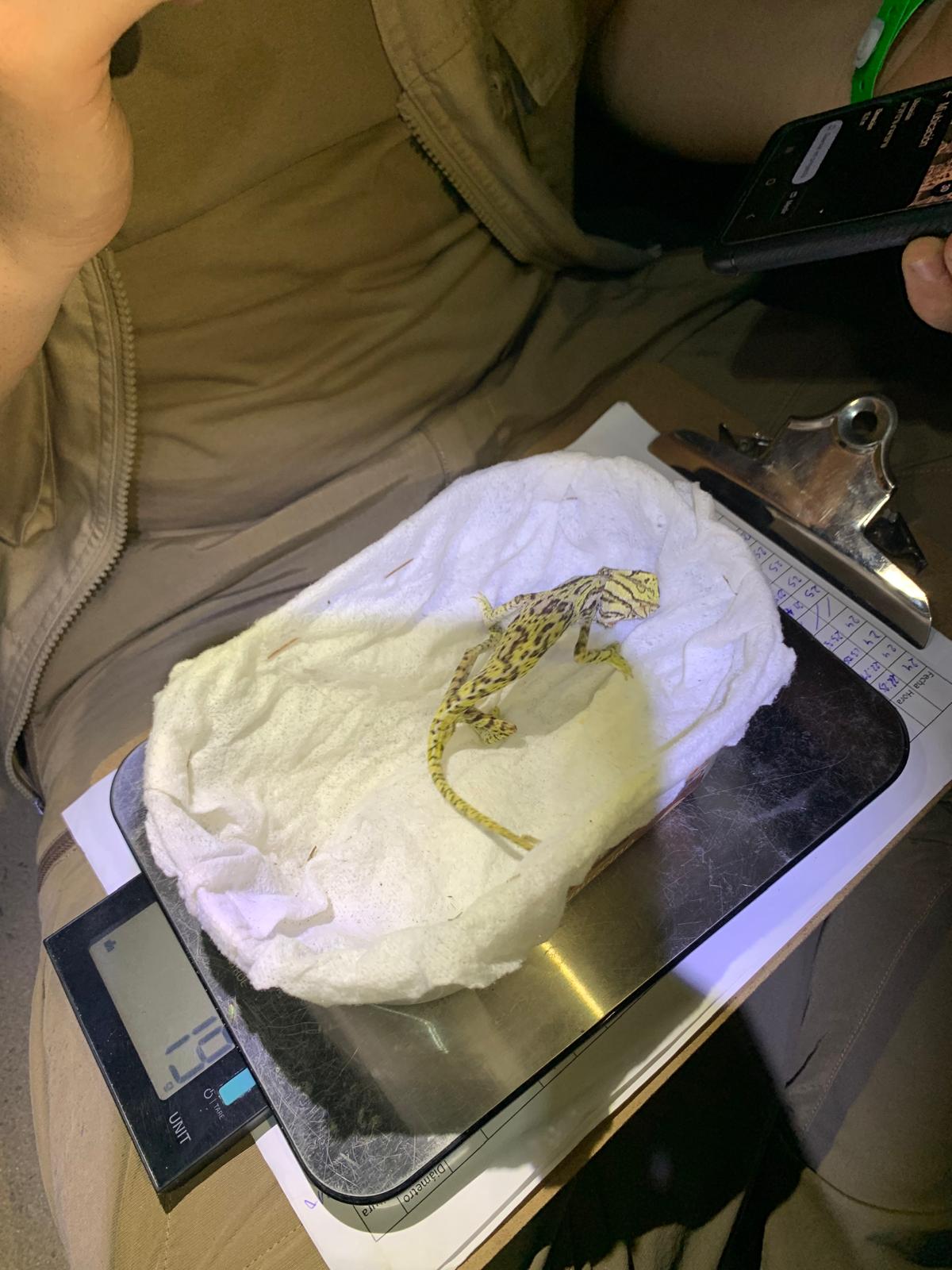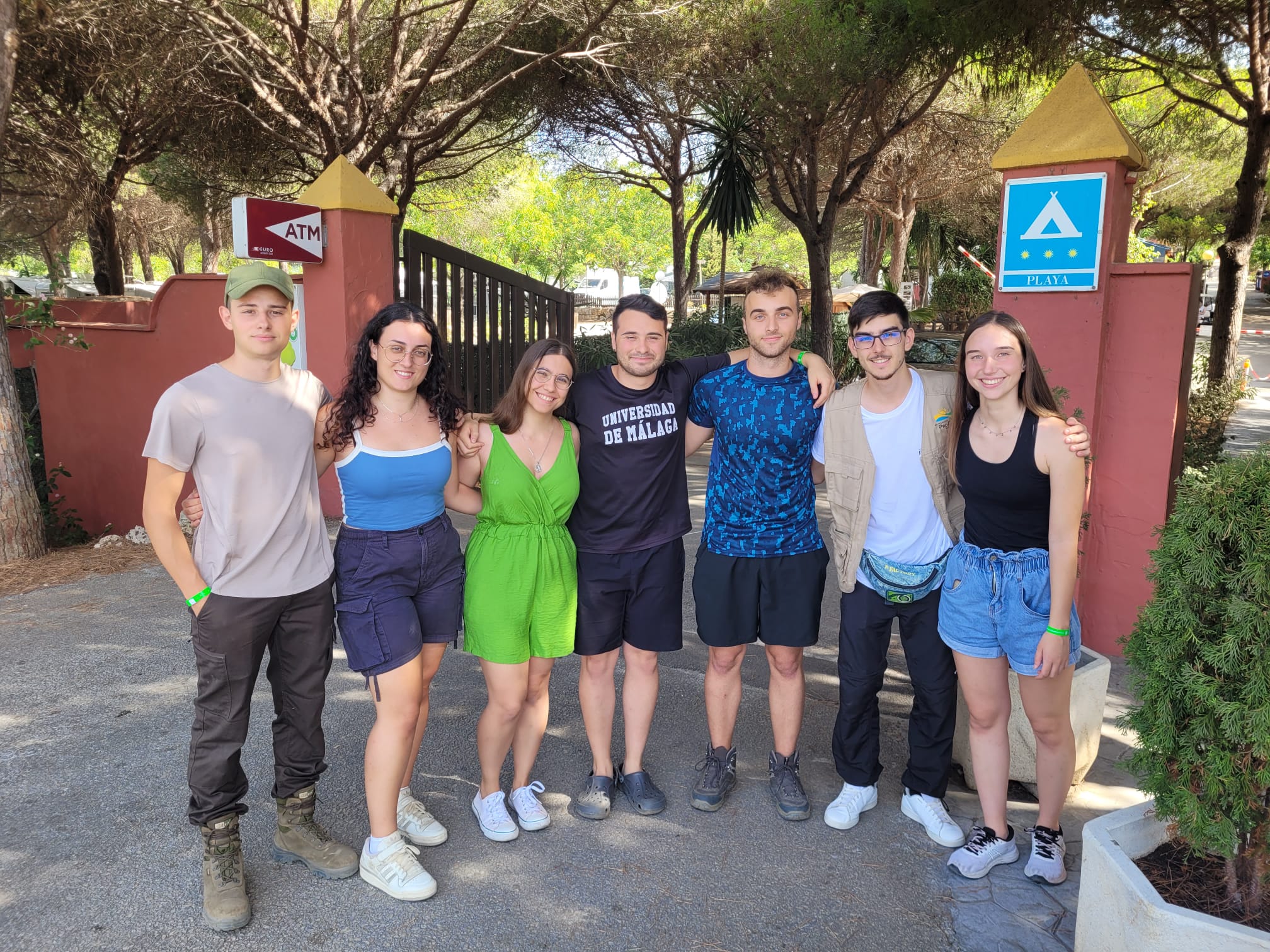SAMPLING COMMON CHAMELEON IN THE NATURAL MONUMENT ‘DUNAS DE ARTOLA’ WITH UNIVERSITY STUDENTS
January 2025 – Scientific publication on the sampling of common chameleons in the Natural Monument ‘Dunas de Artola’.
Students from the University of Málaga, working with the Association ProDunas Marbella, have been working for years on the conservation of the Costa del Sol dune ecosystems. Among their outstanding activities are the cleaning up and removing of pine needles in the Natural Monument ‘Dunas de Artola’, the study of the seagrass meadows off the coast of Marbella and the restoration of the Calahonda dune.
Today we celebrate their most recent achievement: ‘Structure of a Population of common Chameleons (Chamaeleo chamaeleon) (Linnaeus, 1758) introduced in the Natural Monument “Dunas de Artola” (Marbella), the first scientific study carried out on common chameleons in this emblematic natural area.
Published in the Boletín de la Asociación Herpetológica Española n°35(2), this scientific article reports the results of the sampling carried out in July 2023. The team of authors, made up of Rafael Negrete, Miguel Á. Cabalín, Adrián Ruiz, María L. Castillo, Iván Toro, Marta Soto, Lidia Zamora, Emma Volkmann and with the valuable tutoring of Dr. David Romero Pacheco, presents a detailed analysis of the population of common chameleons, including:
– Distribution according to sex and age;
– Conservation status of the population;
– Impacts as a result of human activity;
– Other relevant data on this fascinating species.
This work represents a milestone in the study of common chameleons.
Read the full article in the Bulletin of the Spanish Herpetological Association n°35(2): Link to pdf
July 2024 – Report on the Sampling Study of the Common Chameleon in the Dunas de Artola Natural Monument
University Research on the Common Chameleon in the Artola Dunes
This is the second year that students from the University of Malaga, with the permission of the Junta de Andalucía, carried out a sampling study of the Common Chameleon (Chamaeleo chamaeleon) in the “Dunas de Artola” Natural Monument.The team of university students led by undergraduate Rafael Negrete and supervised by the project tutor David Romero carried out a detailed study of the Common Chameleon population in the area. They collected data such as sex, weight, measurements and the exact area where each chameleon was found and subsequently released to continue its life in its natural habitat.
This work, which was carried out on a voluntary basis, took place between July 24-29 by seven or eight volunteers. They carried out a night time search for Common Chameleons. In total, six hectares of the 19.27 hectares that make up the Natural Monument were studied. Although we know that the chameleon is present outside the sampling area, the research focused on the area where the Common Chameleon releases were carried out between 2016-2020. These releases of chameleons were carried out by CREA with the participation of the ProDunas Marbella Association, resulting in the population currently under study.
In 2023, a total of 28 chameleons was sighted. According to the snout-to anal length (cm), 16 individuals were classified as juveniles and 12 as adults. According to the size of the head and the shape of the anus, 12 females and 11 males were identified, leaving 5 individuals unidentified.
This year, 2024, things have gone better because using the same methodology, a similar sampling effort and the same dates, a total of 51 different specimens was counted: 33 adults and 18 juveniles, 13 males, 21 females and 17 unidentified.
Regarding the health of the population, the majority of the specimens were healthy, without injuries and were judged to be well nourished, indicating a population in good health and reproductive status. However, threats such as anthropogenic pressure and the presence of some cats were detected. New surveys will be required to analyse the population trend in the sample areas, expand the study to non-sampled territories of the Natural Monument and evaluate the long-term viability of the populations.
Author: Rafael Negrete.
Do you want to receive our Newsletter?
Do you want to become a member or be our friend of the dunes?
Asociación ProDunas Marbella
The Association works tirelessly for the defence and preservation of the unique ecosystems that survive in the natural sand dune environments in the Province of Málaga; promotes the protection of native flora and small wildlife; promotes recovery, rehabilitation and conservation of interesting biodiversity of sand dunes areas in the municipality of Marbella.


